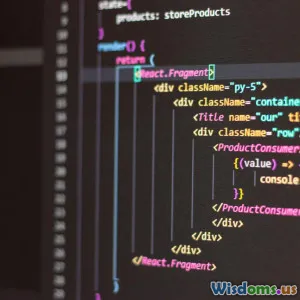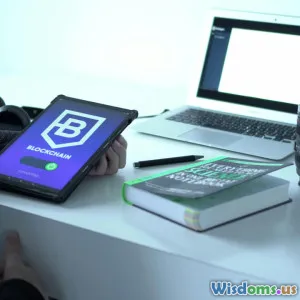
A Personal Journey Automating Daily Tasks with Python Scripts
8 min read Discover how automating daily tasks with Python transformed productivity and simplified life through real experiences and practical examples. (0 Reviews)
A Personal Journey Automating Daily Tasks with Python Scripts
Automation is often seen as a powerhouse of productivity in the tech world, but what happens when it filters down to personal, everyday life? For many, tedious daily tasks act as hidden productivity sinks. This is the story of how I turned Python, one of the world’s most accessible programming languages, into a tool to reclaim hours every week by automating routine chores.
Introduction: Curiosity Sparks Change
It started with a simple irritation: repetitive data entry from emails into spreadsheets. This mundane, error-prone task felt like it was stealing time reserved for creative and meaningful work. I wondered—could I teach my computer to handle this? Discovering Python sparked not just a solution but an entirely new approach to handling day-to-day life and work.
My journey with Python automation morphed into a series of projects that not only saved time but also sharpened my problem-solving skills, boosted efficiency, and even sparked lifelong learning passions.
Embracing Python: A Beginner-Friendly Ally
When choosing a tool for automating daily tasks, I prioritized accessibility and community support. Python’s simple syntax and vast ecosystem of libraries made it ideal. Even novice programmers could write effective scripts with minimal overhead.
Why Python?
- Readability: Python’s syntax is clear and concise, so scripts remain understandable.
- Libraries: With libraries like
pandasfor data manipulation andsmtplibfor email automation, Python offers tailored solutions out of the box. - Community: Extensive documentation and active forums eased my troubleshooting process.
In short, Python perched at the perfect intersection of capability and approachability.
Starting Small: Automating Email Notifications
I began by automating simple notifications. One of the first scripts I wrote used Python's imaplib and smtplib to monitor an inbox for keywords and send automatic alerts. For example, if I received an urgent email with words like “deadline” or “urgent,” the script sent a text notification to my phone.
Impact: This removed the need to obsessively check my inbox, reducing distraction and boosting focus. It was a small win but deeply motivating.
Automating Data Entry with Pandas and OpenPyXL
My daily routine included tediously copying data from various sources to Excel reports. Automation here meant scripting the entire process:
- Data extraction: Using Python scripts to download or scrape relevant data files.
- Processing: Using
pandasto clean and format data. - Integration: Writing the processed results directly to spreadsheets with
OpenPyXL.
One script cut down a 45-minute manual workflow to under 5 minutes. That’s over six hours saved each month.
Real-World Example:
Importing sales data from CSV files, cleaning inconsistent date formats and currency symbols, and then compiling monthly summaries with charts—all served via an automatable report.
Streamlining File Management with os and shutil
Housekeeping tasks like file organization consumed unexpected chunks of time. Using built-in Python modules such as os and shutil, I scripted systems to:
- Automatically move files from downloads into categorized folders,
- Rename files based on content or date,
- Archive older documents for easier retrieval.
Key Insight: Automation doesn’t just save time; it also reduces mental clutter by maintaining an orderly digital environment consistently.
Integrating APIs for Expanding Automation возможностей
As my skills grew, I discovered public APIs for platforms like Twitter, Google Sheets, and Slack. Leveraging these, I expanded automation beyond local files.
Example:
A Python bot that scrapes headlines about specific stocks, performs sentiment analysis with natural language processing, then posts summaries into a Slack channel for timely team awareness.
This project underscored how combining different systems can produce sophisticated automation pipelines personally tailored to needs.
Overcoming Challenges
Every automation journey involves hurdles:
- Debugging: Early scripts often failed silently or gave cryptic errors requiring patience.
- Security: Handling credentials responsibly with environment variables was critical to protect sensitive information.
- Maintaining scripts: As workflows evolved, scripts needed updates to stay effective.
Persistence, community forums like Stack Overflow, and iterating code were key to triumphing over these obstacles.
The Broader Impact: Productivity and Beyond
Automation’s benefits extended beyond saving time:
- Creativity: Automating mundane tasks freed cognitive bandwidth to focus on creative strategies.
- Professional Growth: My expanding Python skills opened doors to collaborative projects and freelance gigs.
- Mindset Shift: Seeing automation as a problem-solving tool equipped me to approach challenges innovatively.
Conclusion: Inspiring Action and Exploration
Automating daily tasks with Python changed more than just my workflow; it transformed how I value time and approach problems. For anyone feeling bogged down by routine, learning to automate—even in small ways—can create profound changes.
Whether you’re a student, professional, or hobbyist, I encourage you to pick one repetitive task, learn a simple Python script to automate it, and build from there. The journey might just be as rewarding as the destination—freeing up precious moments to focus on what truly matters.
“Automation applied to an efficient operation will magnify the efficiency. Automation applied to an inefficient operation will magnify the inefficiency.” - Bill Gates
By carefully choosing which tasks to automate, you can unlock not just efficiency but effectiveness. My personal journey shows that with curiosity, persistence, and the right tools, anyone can harness Python to revolutionize their daily routine.
Additional Resources for Aspiring Automators
- Automate the Boring Stuff with Python by Al Sweigart: An excellent free resource to start coding practical Python scripts.
- Real Python Tutorials: Deep dives into Python concepts and real-life applications.
- Github Python Automation Projects: Explore inspiring open-source scripts and projects.
Starting today, your routine might transform one script at a time!
Rate the Post
User Reviews
Popular Posts



















